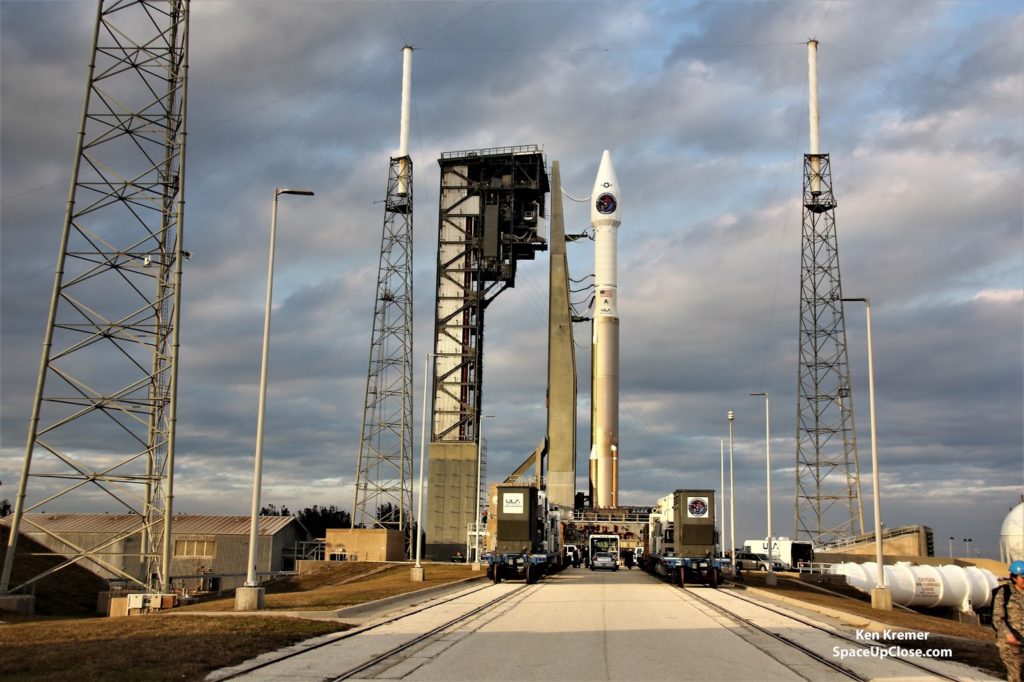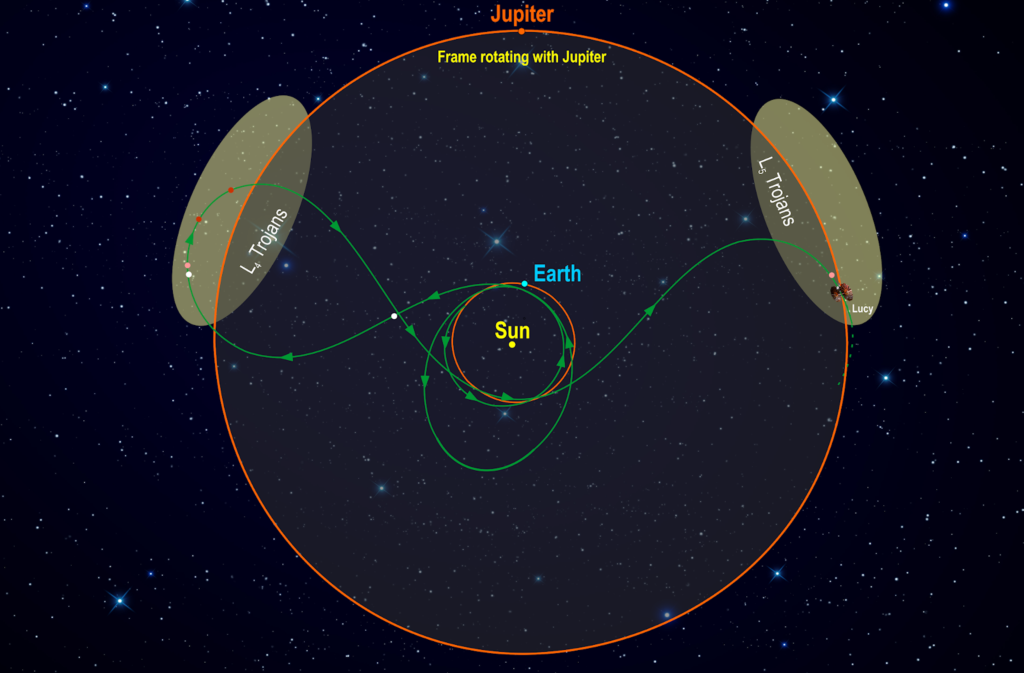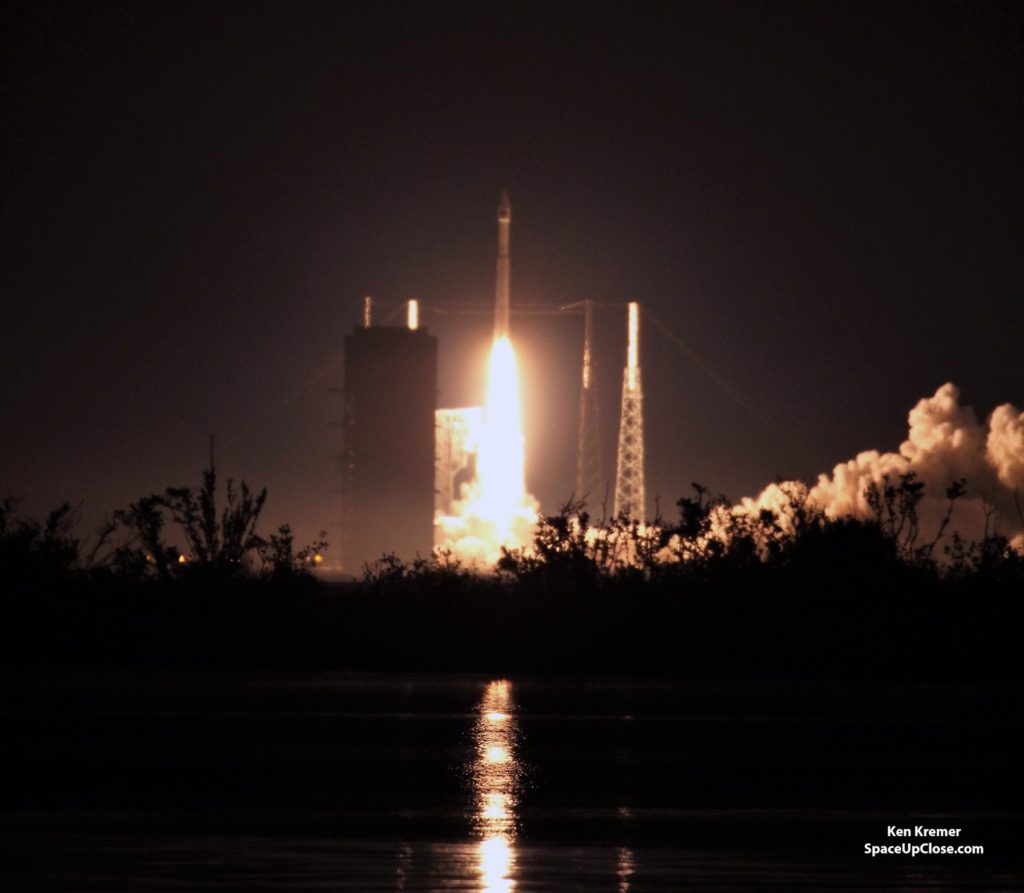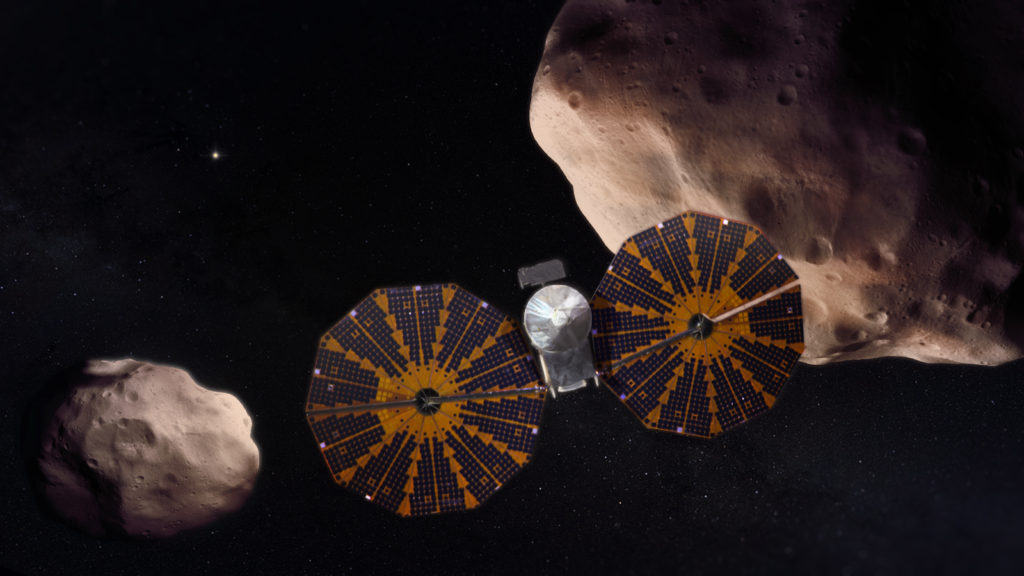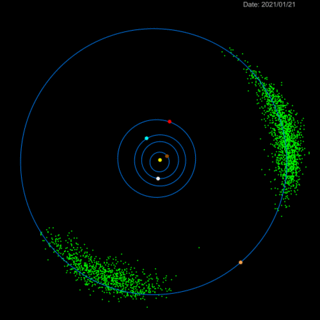Ken Kremer — SpaceUpClose.com & RocketSTEM — 1
February 2019
CAPE CANAVERAL, FL – NASA has selected the United
Launch Alliance workhorse Atlas V rocket to launch the Lucy planetary science spacecraft
on the agency’s first ever mission to Jupiter’s swarm of unexplored Trojan asteroids.
Liftoff of Lucy is slated for just under
1000 days from now from the Florida Space Coast. It was selected as
NASA’s 13th Discovery class mission in Jan. 2017. The
launch window opens Oct. 16, 2021.
The Lucy
mission currently is targeted to launch in October 2021 on an Atlas V rocket
from Space Launch Complex-41 (SLC-41) at Cape Canaveral Air Force Station in
Florida, NASA announced in the contract award on Jan. 31.
“With boosts from Earth’s gravity, the spacecraft will embark on a
12-year journey to study primitive asteroids orbiting the Sun in tandem with
Jupiter,” said NASA.
six Trojan asteroids, which lead and follow Jupiter in its orbit by roughly 60
degrees and one main belt asteroid that “hold vital clues to the history of the
Solar System.”
“No other space mission is history has been launched to as many
different destinations in independent orbits around the Sun!”
And there is no margin for delay with either the rocket or the
spacecraft because the mission must blastoff on a once-in-a-lifetime
opportunity opening Oct 16, 2021.
To date the ULA rockets have been 100% reliable and will soon launch NASA astronauts
aboard the Boeing Starliner crew capsule later this year to the International Space Station (ISS).
“We could not be more
pleased that NASA has selected ULA to launch this amazing planetary science
mission,” said Tory Bruno, ULA’s president and chief executive officer, in a
statement.
“This mission has a
once-in-a-lifetime planetary launch window, and Atlas V’s world-leading
schedule certainty, coupled with our reliability and performance provided the
optimal vehicle for this mission. Our Atlas V rocket has launched 79 times
achieving 100 percent mission success, and we look forward to working again
with our mission partners to explore our universe.”
The mission will launch aboard an Atlas V 401
configuration rocket with a 4 meter (13-foot) diameter payload fairing and a single engine
Centaur upper stage with no thrust augmentation from first stage solid rocket
boosters.
The NASA Launch Services Contract award specifies a total cost of approximately
$148.3 million for the Lucy mission, which includes the launch service and
other mission related costs.
Rocker builder ULA has
launched numerous NASA science missions including the Curiosity Mars Science Laboratory;
New Horizons; InSight Mars lander, OSIRIS-REx, the first U.S. mission to return
asteroid samples to Earth; Parker Solar Probe, Juno Jupiter Orbiter and the Solar Dynamics
Observatory to study the sun.
is a Discovery class mission led by principal investigator Harold
“Hal” Levison from the Southwest Research Institute in Boulder,
Colorado.
“Lucy provides us with a unique opportunity,” said Levison, in a Jan. 20 blog post.
“Because the Trojans are remnants of the stuff that formed the
outer planets, they are literally the fossils of planet formation. Lucy, like
the human fossil for which it is named, will revolutionize the understanding of
our origins.”
Lockheed Martin is building the spacecraft as prime contractor.
“Jupiter’s swarms of
Trojan asteroids may be remnants of the primordial material that formed the
outer planets, and serve as time capsules from the birth of our solar system
more than 4 billion years ago. Lucy will be the first space mission to study
the Trojans.
The mission takes its name
from the fossilized human ancestor (named “Lucy” by her discoverers) whose
skeleton provided unique insight into humanity’s evolution. Lucy will complete
a 12-year journey to seven different asteroids.”
After launching on the
Atlas V in Oct 2021, Lucy will carry out two Earth flyby maneuvers in Oct 2022 and Dec 2024 to set up
the asteroid flyby tour.
Here is a detailed outline
of the Lucy asteroid flyby tour:
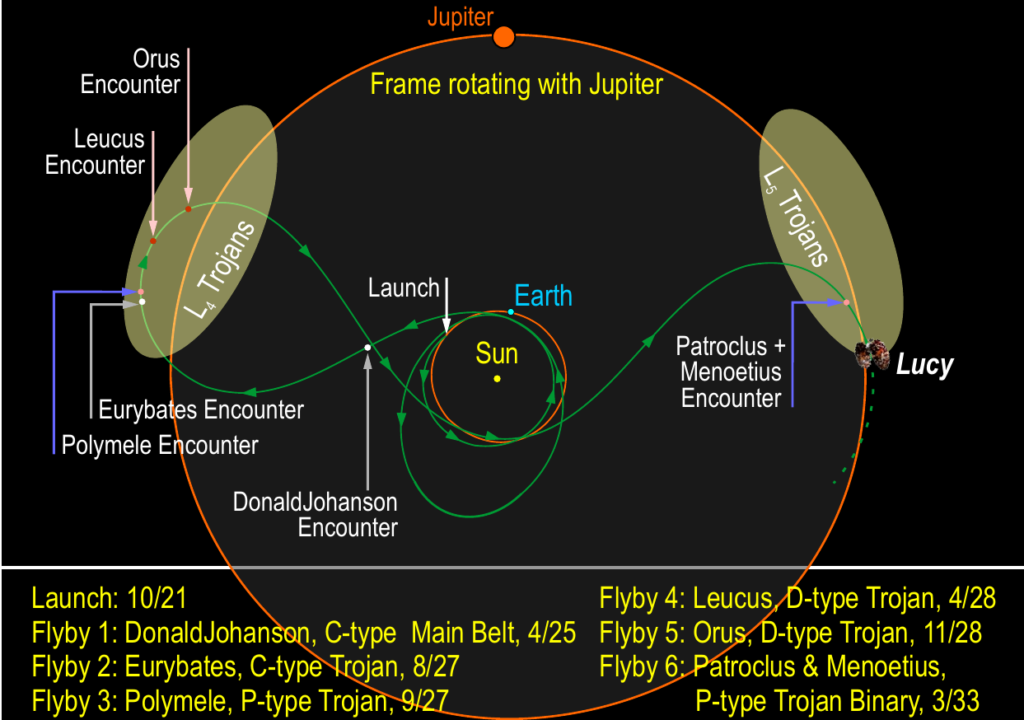 |
| Lucy mission asteroid flyby tour |
Southwest
Institute (SwRI) in Boulder, Colorado is the principal investigator institution
for the Lucy Mission and will lead the science investigation. NASA’s Goddard
Space Flight Center, Greenbelt, Maryland will provide overall mission
management, systems engineering, and safety and mission assurance. Lockheed
Martin Space Systems in Denver, Colorado will build the spacecraft.
Watch for Ken’s continuing onsite coverage of NASA, SpaceX, ULA,
Boeing, Lockheed Martin, Orbital ATK and more space and mission reports direct from
the Kennedy Space Center, Cape Canaveral Air Force Station, Florida and Wallops
Flight Facility, Virginia.
Stay tuned here for Ken’s continuing Earth and Planetary science and human
spaceflight news: www.kenkremer.com
–www.spaceupclose.com – twitter @ken_kremer – email: ken at kenkremer.com
Dr. Kremer is a research scientist and journalist based in the
KSC area.
.……….
Ken’s photos are for sale and he is available for lectures and outreach events
upcoming talks:
3:
“Exploring Mars; The Search for Life & A Journey in 3-D.” 7 PM, Lawton C
Johnson Middle School, Summit, NJ. Open to the public. Details upcoming.
Latest results from Mars & Ultima Thule


